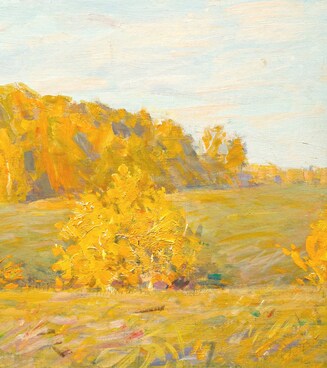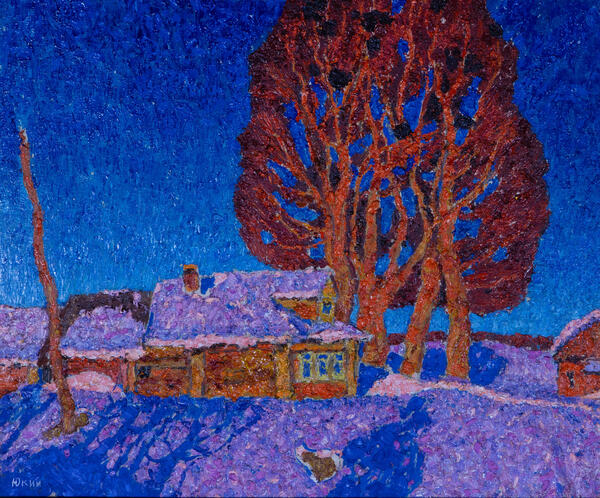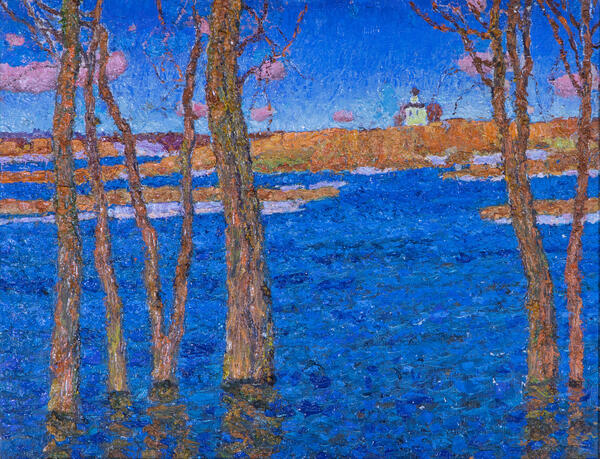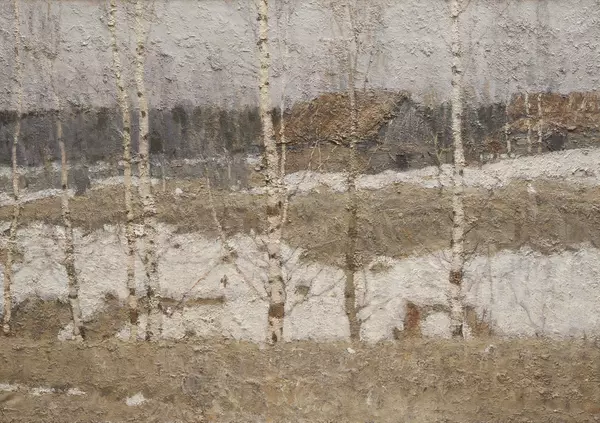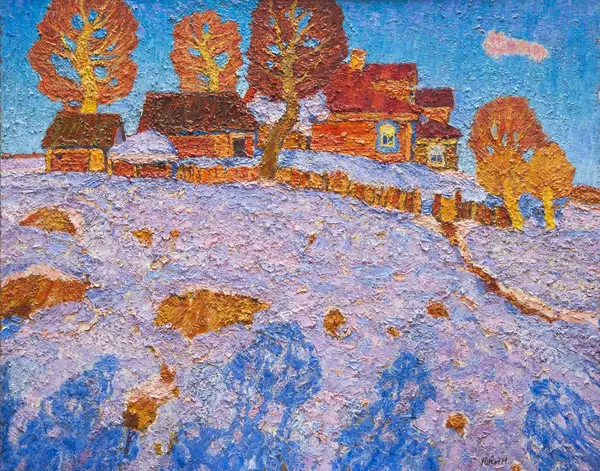Vladimir Yakovlevich Yukin was born in 1920 in Mstyora, a village known as a center of icon painting and lacquer miniature art. From 1936 to 1940, he attended the Ivanovo Art School, where he studied under the guidance of Mikhail Semyonovich Pyrin, a student of Valentin Alexandrovich Serov.
Vladimir Yukin survived the ordeal of the Great Patriotic War, after being held captive. He welcomed the victory in Germany, was awarded medals “For the Victory over Germany” and “For the Liberation of Prague”. It was the war years that inspired him to start painting professionally in the late 1940s and early 1950s.
The artist developed his own unique style of painting. He preferred a bright, even decorative color palette. Vladimir Yukin explored the power of color, using both smooth and uneven, rough texture, as well as thick and, conversely, transparent brushstrokes. In working with color, he sought to achieve lightness and ease. Yukin became one of the founders of the artistic association “Vladimir School of Landscape Painting”.
The landscape “Pink Twilight” shows how sensitively the artist captured the passage of time, the subtle internal movements of nature, the change of day and night. The landscape motif does not exclude elements of other genres. Life on the canvas flows along its ordinary path. The reflections of the scarlet dawn envelop the earth in a pink haze: the air is devoid of transparency and the haze loses its intensity and sunny sparkle, becoming pale and faded.
Vladimir Yakovlevich Yukin sought to colorfully and emotionally display to the viewer the beauty of the Motherland and his love for it. The artist himself did not go on long-distance trips to search for inspiration, instead he returned again and again to the well-trodden paths of the Vladimir land.
The art critic Nadezhda Igorevna Sevastyanova wrote,
